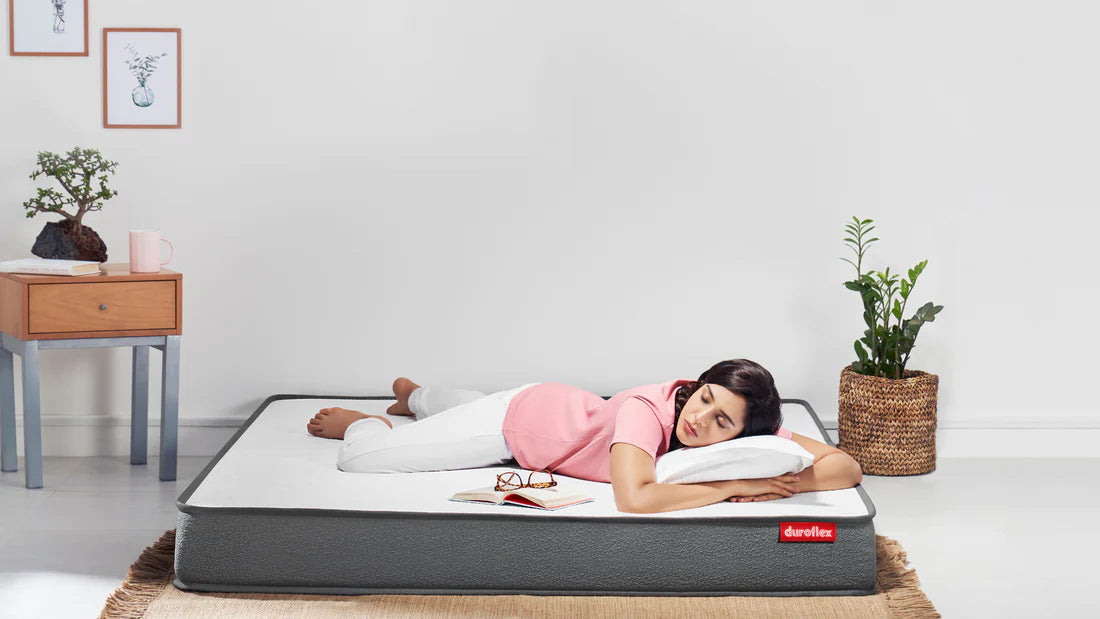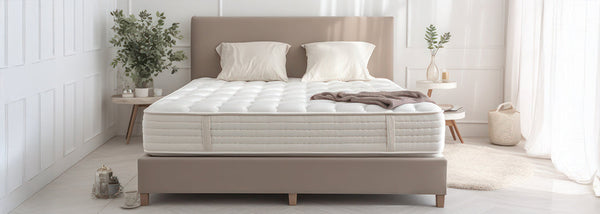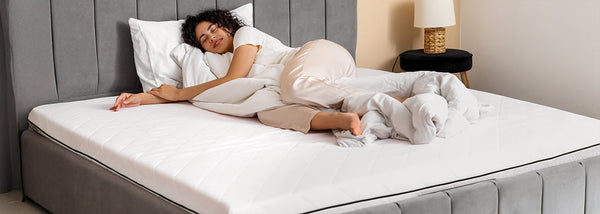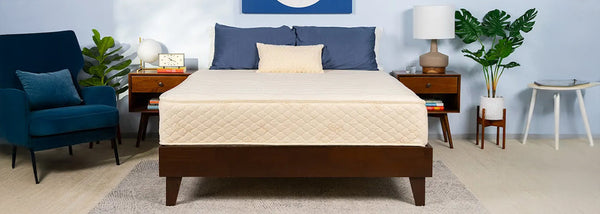what is memory foam mattress? Benefits and Disadvantages

We all need a comfortable mattress to get fulfilled rest, and this rejuvenates the body and keeps us proactive with an energized mind. The type of mattress we sleep on impacts the quality of sleep, and sleeping on a mattress that causes us to toss and turn all night will only make us tired in the morning. Therefore, the material of the mattress we choose is critical to getting the best support when sleeping.
What is a Memory Foam Mattress?
Do you know what a memory foam mattress? A memory foam mattress is famous for a night of good quality sleep. It is designed with memory foam, first used to cushion the seats inside NASA spaceships. The material was chosen because any strong pressure applied to it was immediately absorbed without altering its shape and thickness over prolonged use. Also, memory foam can relieve any distress felt when lying on it. This made it ideal for the astronauts traveling in outer space who felt extreme pressure on their bodies. This led to using the favorite material for medical uses and as mattress fillings.
A memory foam mattress's distinct characteristics make it ideal for daily use. This quality of the mattress makes it unique due to the embracing feeling experienced when lying on it. The mattress foam contours to the body's shape when lying on it. The flexibility of the foam is another notable feature that enables the material to conform to the body shape regardless of the person's weight and build. The mattress can blend well with the body heat whilst maintaining its form over prolonged use.
What is Memory Foam Made of?
In this section, let’s discuss what memory foam is made of. Polyurethane is the primary material used to construct memory foam. This plastic polymer has large molecules, and smaller subunits bind the larger molecules to form a highly versatile substance or foam. This has many uses, like insulation material, spray foam, paints, fibers, etc. Memory foam is made from viscoelastic PU foam, a low-resistance foam material. Different kinds of materials can be added to this viscoelastic PU material to create varying qualities of memory foam. Therefore, the memory foam's elasticity and thickness differ depending on the kinds of add-ons used to make it. The thickness or viscosity of the memory foam gives it a natural shape and can alter its form only under pressure. The foam's stretch quality refers to the material's ability to expand and contract back to its original shape when the pressure is removed.
Polyether polyol is one compound often added to memory foam that gives it the desired thickness and elasticity. The quantity of the compound added affects the final quality of the memory foam, its viscosity and stretch quality.
What are the Benefits of a Memory Foam Mattress?
There are long-term benefits obtained from using a memory foam mattress. Besides the soft feel and explicitly engulfing nature of the memory foam, learn the pros of the highly pliable material for sleeping.
-
Ideal Spinal Alignment
The best part of using a memory foam mattress is that it provides the ultimate lumbar support to the body. A good spinal alignment is provided due to the body-conforming quality of the memory foam. The neutral alignment, therefore, gives good support to the spine when sleeping. It relieves your body of back or body pain making it unique and popular.
-
Relief from Pressure
Any pressure felt in bed, especially in the pressure points like the joints of the body, is negated when lying on a memory foam mattress. This is because of the body-contouring nature of the mattress and the fact that the body weight is evenly distributed. Joints like the neck, pelvis and shoulders are where the pressure is often concentrated if improperly supported when sleeping. This can lead to tossing and turning in bed, trying to get the best position. Hence people suffering from joint-related illnesses like arthritis can make the utmost benefit from using such contouring mattresses. The pressure typically felt on the joints is relieved, making the mattress ideal for individuals with a sore body in the morning.
-
Non-toxic
The hypoallergenic quality of the memory foam makes it beneficial for those individuals having allergic reactions to common environmental irritants. Those with allergies to mites, dust, fungal spores, etc., can make the most of the mattress as it evades the accumulation of such substances. The density and chemical structure of the PU material gives the foam the ability to resist minor particles from getting attached.
-
Soft and Noise-free
Since the mattress is made from foam, it is beneficial for people with a partner in bed. The soft quality of the foam does not cause any noise when resting on it, especially when getting off the bed. No squeaks or cringes are experienced, even if two or more people are sleeping on the same mattress.
-
Negative Motion Shifting
The viscosity of the memory foam mattress does not cause any motion transfer when sleeping on the bed, and this is especially suitable when two or more people are sleeping on the mattress. The negative motion transfer helps light sleepers who can get disturbed at the slightest movement from the next person in bed.
Disadvantages of Memory Foam Mattresses
Despite the many benefits of using memory foam mattresses, some disadvantages exist.
- Retain Heat: The main drawback of these mattresses is the heat retention problem. The traditional memory foam without technological add-ons tends to get very hot through the night and may become uncomfortable.
- Retain Moisture: The moisture retention drawback of raw memory foam is another disadvantage. This decreases the longevity of the mattresses made from it.
- Heavy: The heavy weight of the mattresses makes it challenging to move them about.
- Expensive: Memory foam is expensive, especially the modified mattresses made from it.
Does a Memory Foam Mattress Get Warm?
One of the notable drawbacks of a memory foam mattress is the heat retention experienced, which can be uncomfortable. But over the years, various types of substances have been added to the memory foam that makes it cool. The mattress's temperature is regulated most comfortably, making them suitable for all weather conditions. The density of the foam is altered considerably, making it more porous, thereby allowing air to pass through. The thickness of the memory foam is also changed to prevent heat-trapping within. The mattress's memory foam layers can be altered to cope with the heat retention quality. The final thickness of the mattress influences the softness and heat retention quality. Hence it is important to choose the right thickness for the mattress.
Different firmness levels are available in memory foam mattress varieties. The right degree of firmness is essential to avoid any heat buildup. The level of firmness can be evaluated to know what suits your needs. This is measured in terms of the mattress's Indentation Load Deflection (ILD) value. The ILD rating gives the hardness level of the bed. Every layer within the mattress has its own ILD score, and the ILD rating of the mattress, on the whole, is therefore different.
How Can You Make Your Memory Foam Mattress Softer?
Mattress toppers are available that change a mattress's upper firmness levels. These toppers may be bought based on the firmness level desired and used. You can choose the kind of mattress topper for increasing or decreasing the firmness levels as you desire.
The overall firmness in a memory foam mattress decreases as it is used daily. So the mattress topper can be bought keeping this point in mind. After some weeks, as the mattress adjusts to the body weight and shape, the firmness levels alter to a certain extent.
Does a Memory Foam Mattress Smell?
When bought, the initial 'new smell' of the mattress can be discarded by keeping the mattress exposed in a well-ventilated area. This can be done for a few days to eliminate the fire-retardant smell.
But since memory foam mattresses are resistant to the accumulation of fungal growth or dust particles, the odor retention factor is considerably reduced too.
The practical way to avoid odor retention in a mattress is to use a mattress cover, which protects the mattress over the long run from spills or body discharges like sweat. The cover may be conveniently removed, washed and reused for new and durable use.
How Long Can a Memory Foam Mattress Last?
A memory foam mattress's typical lifespan is at least seven years. But how it is used every day and how well it is cared for determines the mattress's longevity. Even though fungal spores, mites or dust do not penetrate the inside of the mattress, the upper and lower surfaces can get exposed to environmental pollutants. Hence it is suggestible to use a mattress cover to prevent this. Vacuuming the mattress regularly on the surface also helps eliminate any accumulation.
Conclusion
The structure, firmness, odor retention, heat retention, benefits and longevity of a memory foam mattress are some points to consider before investing in one. The mattress's overall cost varies with the technology used to make it, taking into account the points mentioned above. So choose







